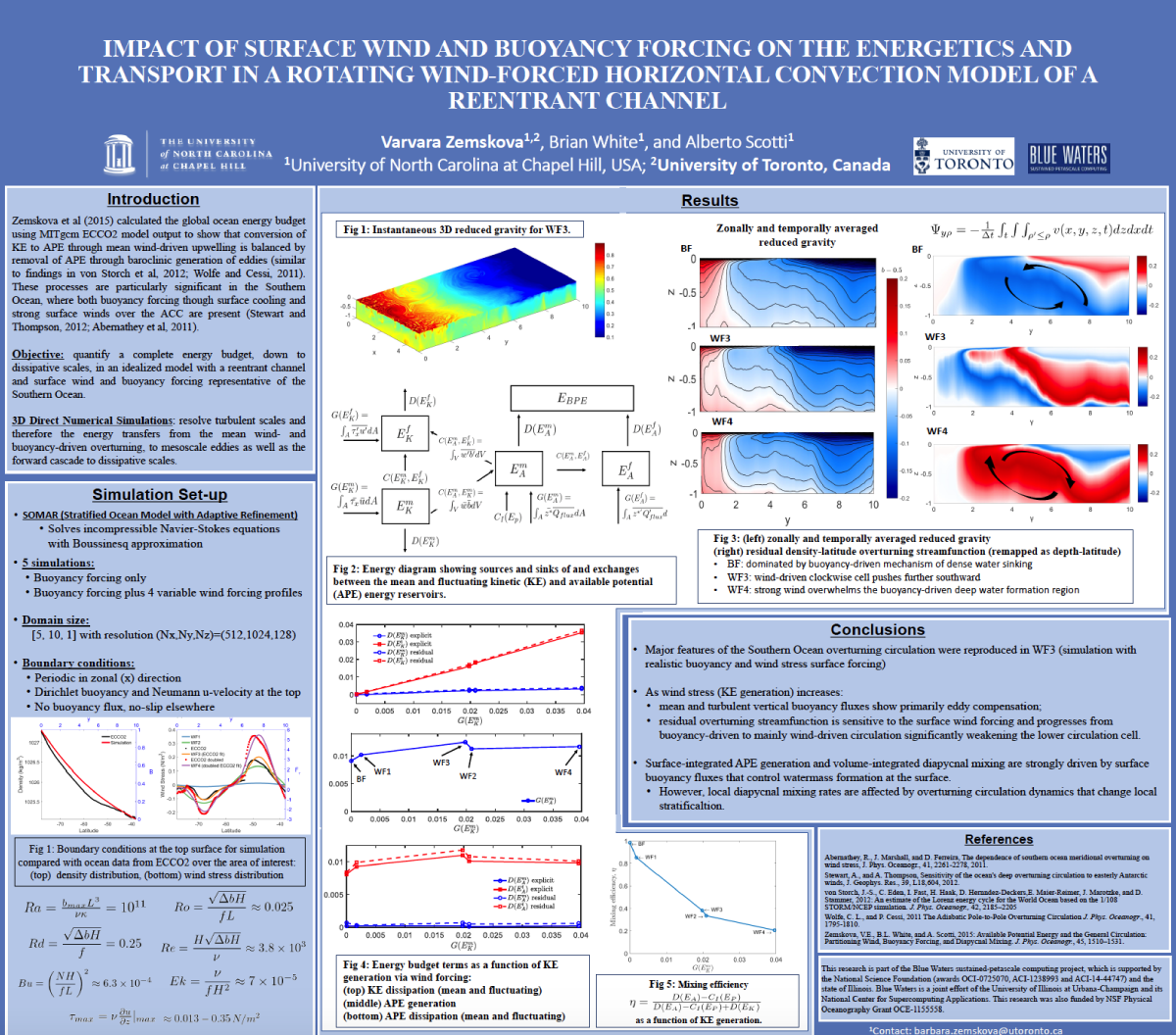Zemskova, V., White, B.L., and Scotti, A.D. (2020)
Presented at:
Ocean Sciences Meeting 2020We present numerical results for an idealized rotating, buoyancy- and wind-forced channel as a simple model for the Southern Ocean branch of the Meridional Overturning Circulation (MOC). Differential buoyancy forcing is applied along the top horizontal surface, with surface cooling at one end (to represent the pole) and surface warming at the other (to represent the equatorial region) and a zonally re-entrant channel to represent the Antarctic Circumpolar Current (ACC). Zonally-uniform surface wind forcing is applied with a similar pattern to the westerlies and easterlies with varying magnitude relative to the buoyancy forcing. The problem is solved numerically using a 3D direct numerical simulation (DNS) model based on a finite-volume solver for the Boussinesq Navier-Stokes equations with rotation. The overall dynamics, including large-scale overturning, baroclinic eddying, turbulent mixing, and resulting energy cascades are studied by calculating terms in the energy budget using the local Available Potential Energy framework. The basic physics of the overturning in the Southern Ocean are investigated at multiple scales and the output from the fully-resolved DNS simulations is compared with the results from previous studies of the global (ECCO2) and Southern Ocean eddy-permitting state estimates. We find that both the magnitude and shape of the zonal wind stress profile are important to the spatial pattern of the overturning circulation. However, the available potential energy budget and the diapycnal mixing are not significantly affected by the surface wind stress and are primarily set by the buoyancy forcing at the surface.


